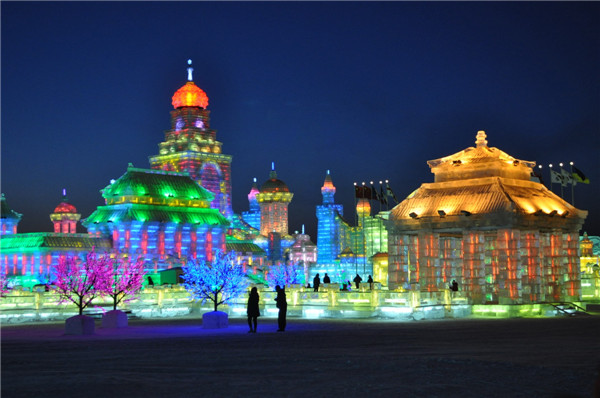Heilongjiang offers new routes to explore winter wonderland
 |
|
Ice replicas of ancient palaces and buildings highlight the annual International Ice and Snow Sculpture Festival in Harbin. [Photo provided to China Daily] |
"The bookings usually start in December, after snow falls," she says.
(Out of sight, out of mind, it seems.)
She expects more people to visit this winter, since another seven promotional events will be staged nationwide in coming months.
Heilongjiang's unique geology endows it with cool summers and stunning winter scenes forged by copious snow and ice.
Snow falls 120 days a year.
"We blend frozen landscapes with winter activities to ensure unforgettable experiences," the provincial tourism administration's head Xi Dongguang says.
China's winning bid to host the 2022 Winter Games seems likely to expand the number of travelers to the province this season.
President Xi Jinping said more than 300 million Chinese will likely become involved in winter sports, following the announcement.
But Heilongjiang's winter tourism was heating up before China got the games.
All major sites experienced a 40-65 percent growth in visits last winter, during the period ending Feb 28, 2015, the tourism bureau reports.
(Growth in this year's first nine months was 22 percent year-on-year. More than 88 million tourists visited.)
There was a positive market response to the winter route the province launched last year that integrates the provincial capital, Harbin; Yabuli, which is known for skiing; and Xuexiang village, where snow buries farmhouses.
This year, four routes were added to present all of the best Heilongjiang offers.
Harbin, from where all the routes start, has long remained the province's most popular destination.
The Harbin International Ice and Snow Sculpture Festival creates cities of ice-as in multistory ancient palaces are dwarfed by skyscrapers, all emanating polychromatic glows from within.
The sheer size of some of the buildings makes them more like monuments than mere structures.














